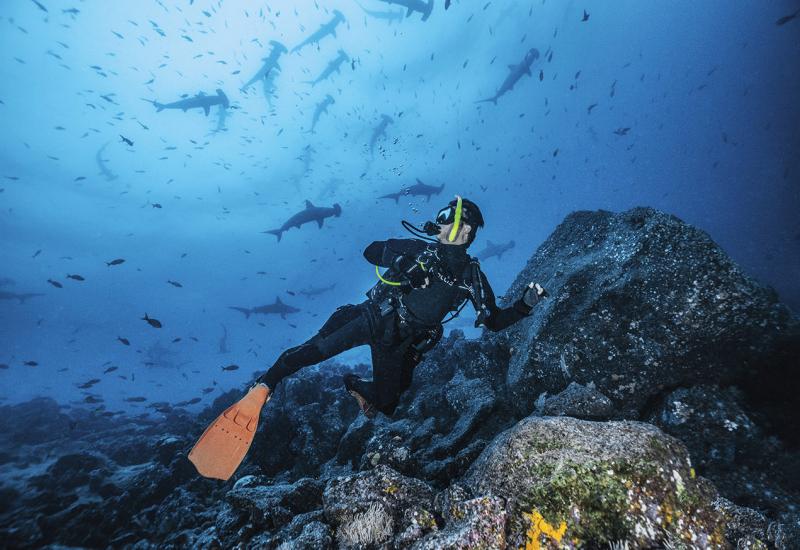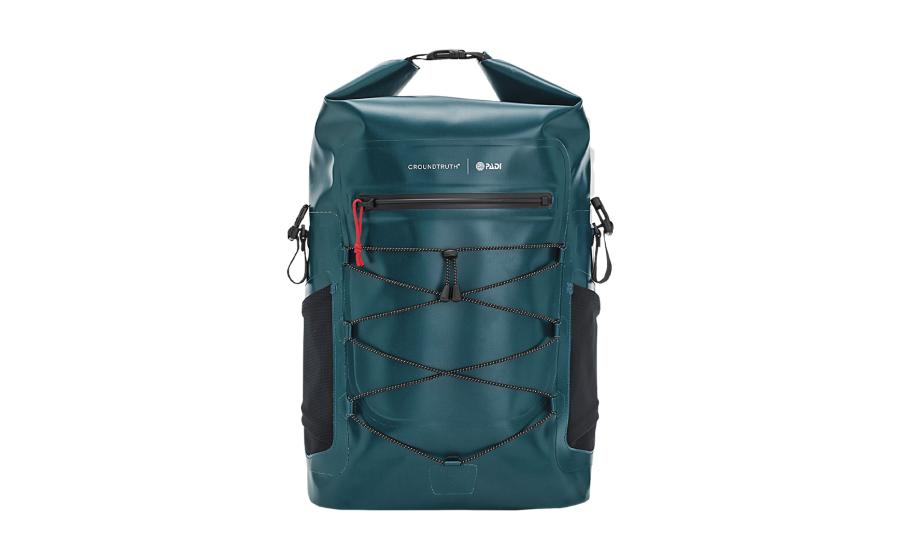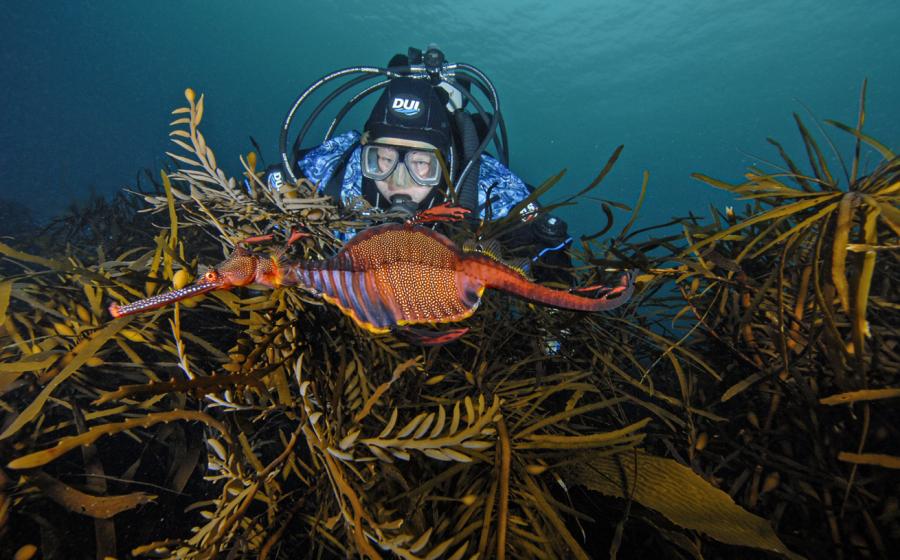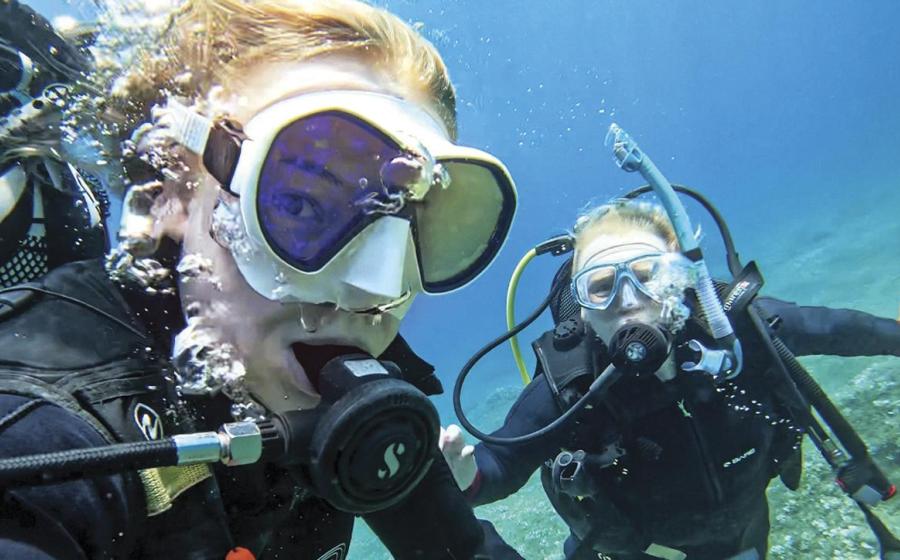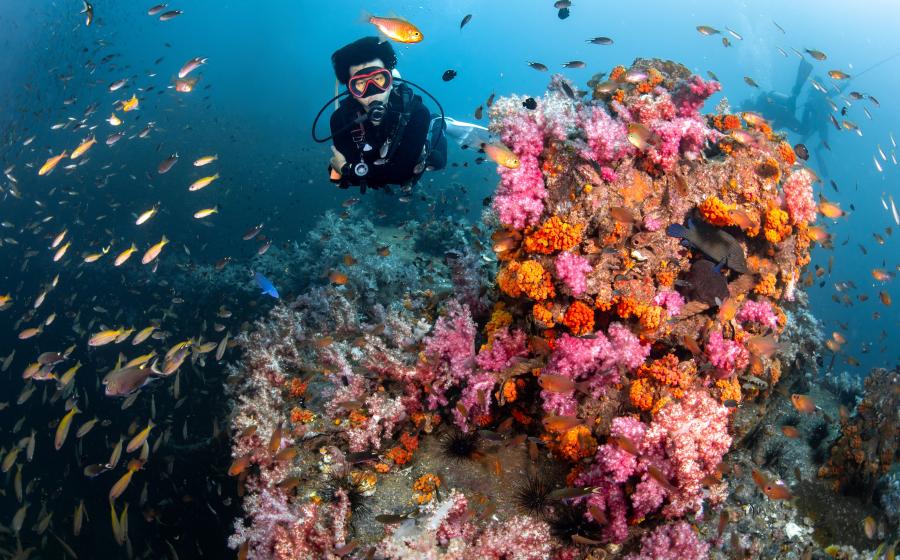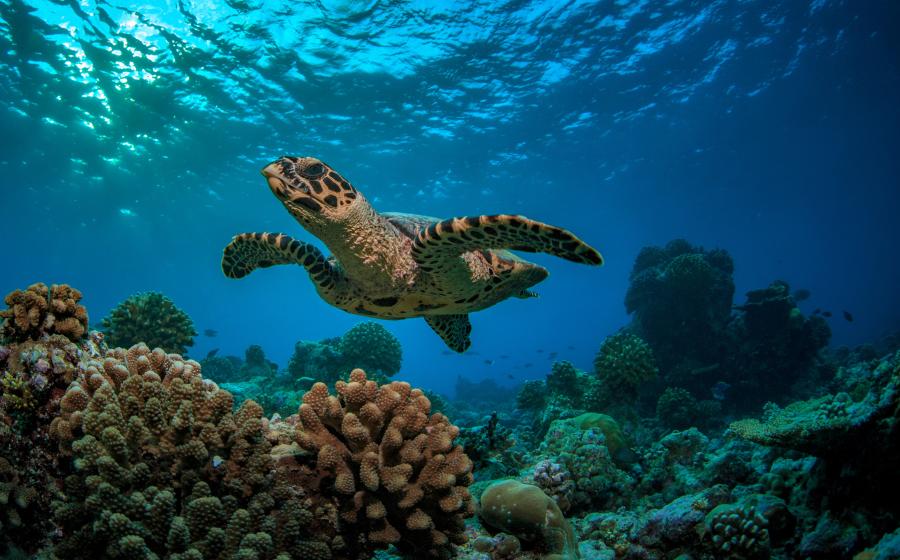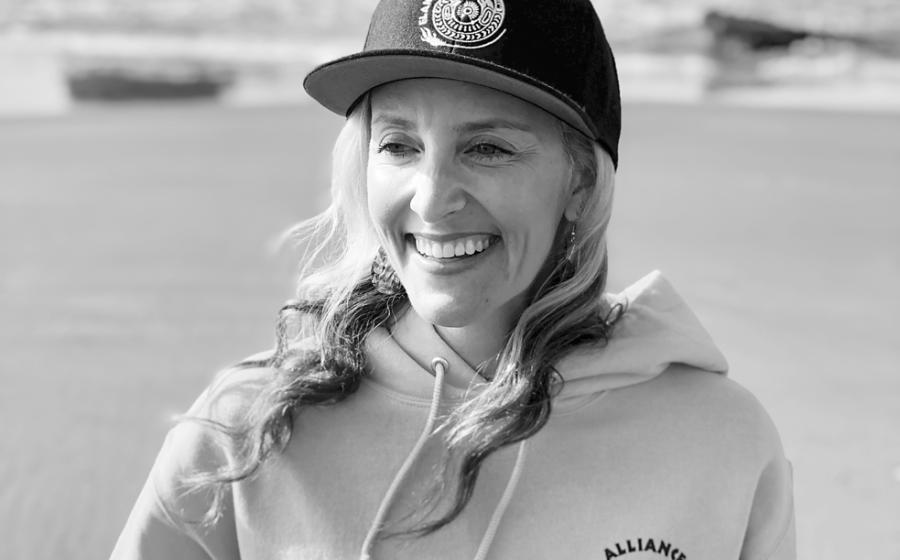Guatemala's Lake Atitlan: A Peculiar Dive Spot with Sunken Hotels, Volcanic Vents and More
If the planet were a person, it’s tempting to imagine what body parts we might declare for the places we love; the heart, the mind and the eyes all appear top contenders. But the Guatemalans who live along Lake Atitlan have claimed one for their high-altitude home: el ombligo del mundo, “the bellybutton of the world.”
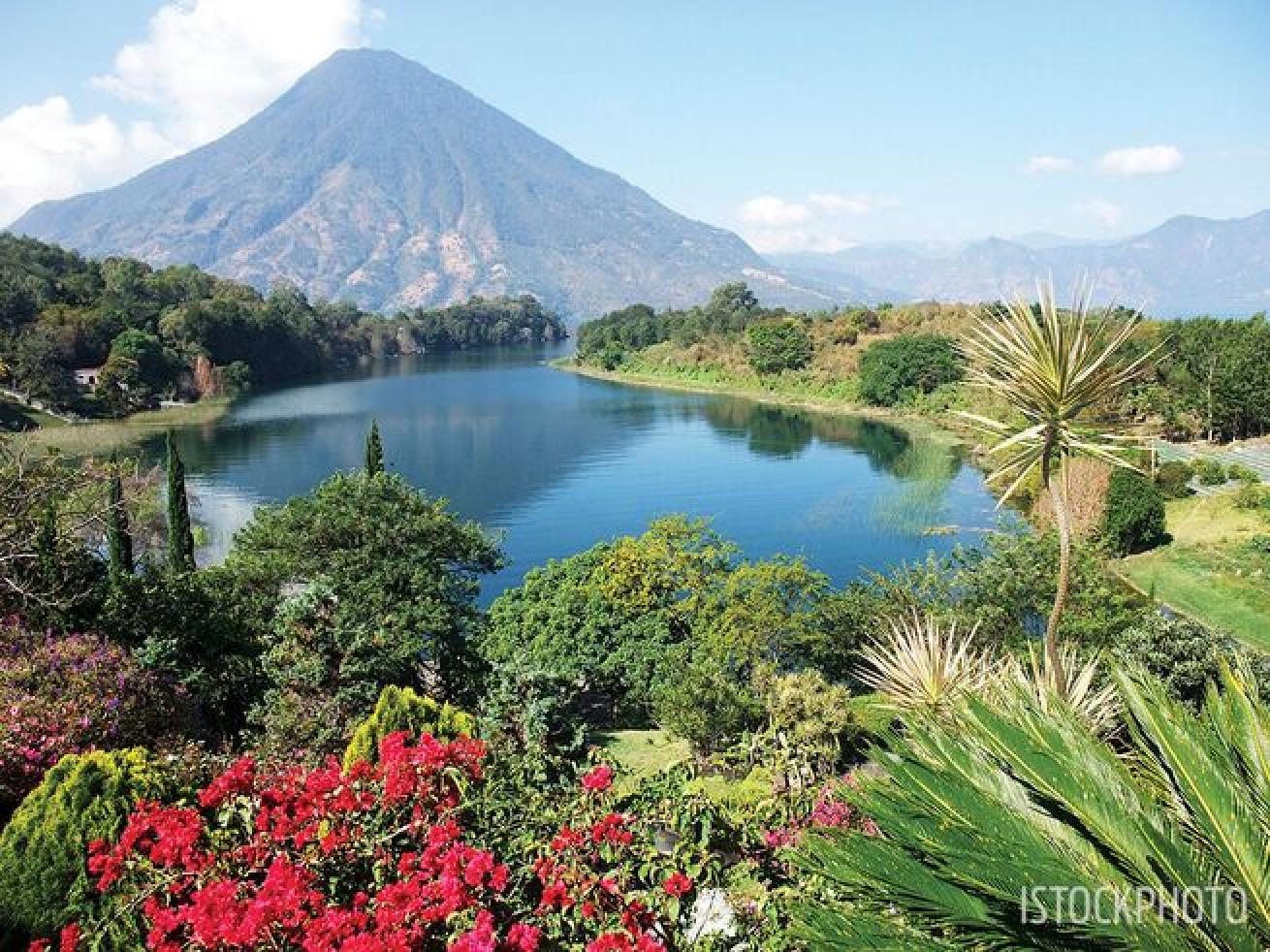
iStockphotoLake Atitlan, Guatemala
This volcanic lake is both the deepest and highest-altitude lake in Central America, and, many claim, one of the world’s great mystical energy centers. In prehistoric times, an eruption here dispersed ash over an area reaching from Florida to Ecuador, collapsing into an 11-mile caldera that eventually filled with rainwater and sediment to form a lake. Today, Atitlan is ringed with about a dozen towns, extensive orchards and a 96 percent indigenous population. And underwater? A witty dive instructor assured me that here I could enjoy a day of diving “unburdened by the distractions of colorful coral and tropical fish.” My curiosity was piqued.
Related Reading: The Newest Marine Sanctuary Beckons Wreck Divers to Explore the Great Lakes

After an early morning donation yoga class on the deck of La Iguana Perdida hotel, I met my divemaster Oli, from local operator ATI Divers, for a briefing over breakfast. He managed our expectations well, promising relatively low visibility, low temperatures and limited life below the surface. But he also spoke passionately of the crabs, snails and fish we might meet; the beautiful freshwater plants, geothermal activity and fascinating underwater structures we were sure to explore; and the bragging rights we could claim for having a volcanic crater in our logbooks.
Our first dive site of the day was Casa del Mundo, named for a hotel on the cliffs above the anchor line. The hotel was also below the anchor line — rising lake waters and a lack of surface outlets created a shoreline lined by drowned houses, flooded docks and properties that are underwater in a way that have nothing to do with mortgage payments.
The lower levels of Casa del Mundo are among them. Lake Atitlan’s levels rise and fall drastically, often preceded by what insurance companies might call “acts of God.” In 1976, a magnitude 7.5 earthquake killed tens of thousands of Guatemalans and fractured the lake bed, dropping the water level 6½ feet within a month. In 2005, Hurricane Stan caused extensive damage around Lake Atitlan, including a devastating landslide that buried the lakeside village of Panabaj, along with 1,400 of its residents. The lake rose again.
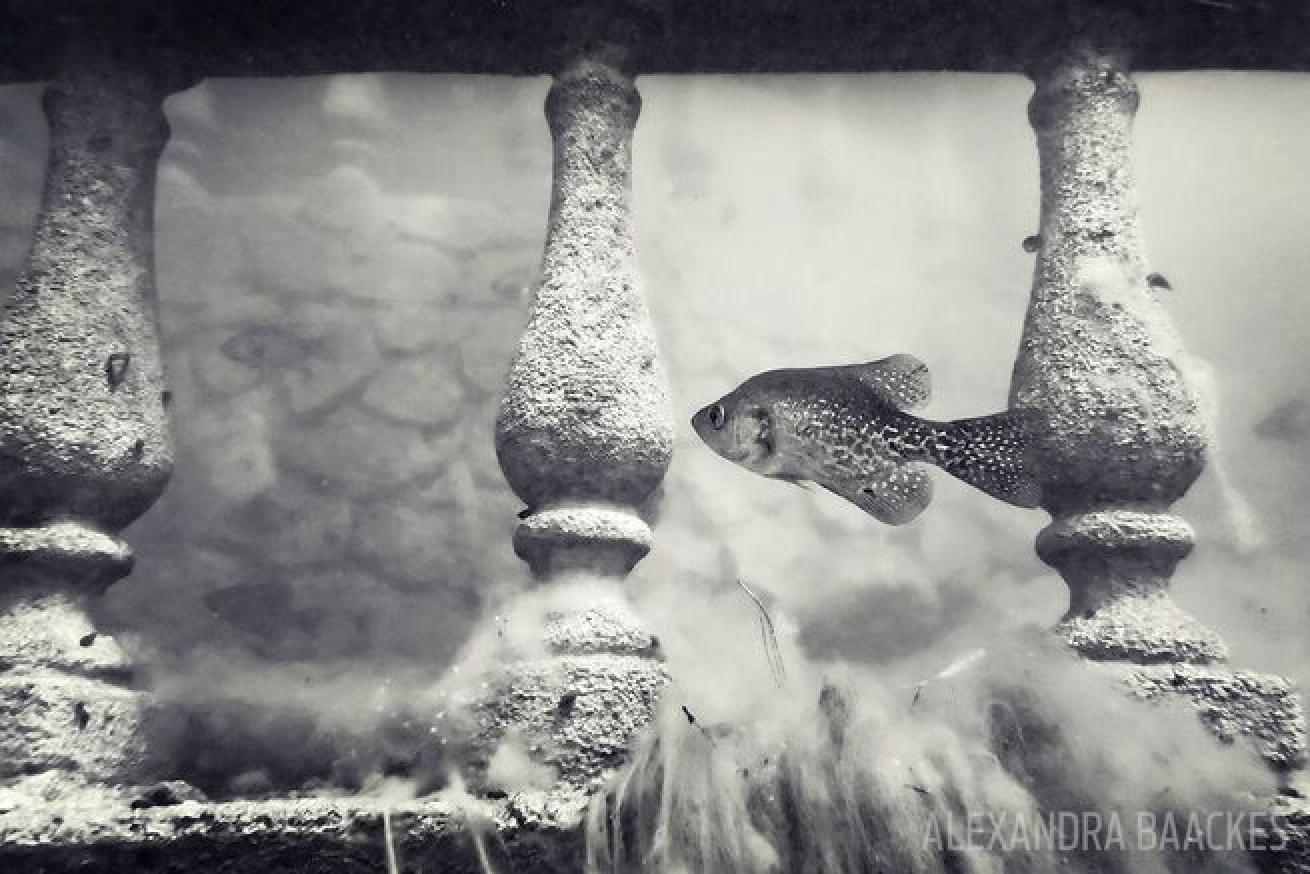
Alexandra BaackesA crappie swims by an underwater balcony.
We back-roll off the boat and descend down the murky waters of a flooded stairwell as I marvel at how my buoyancy feels unfamiliar at altitude. Hovering over an underwater balcony, I think back to my morning yoga at La Iguana Perdida — had a guest here once performed sun salutations to greet the morning? The circular ceiling of a once elegantly designed lounge now traps the air bubbles from our exhalations, and the window that once boasted beautiful lake views now makes for a fun swim-through. A still-functional tap that once bore drinking water now supplies underwater entertainment for divers, pumping a gush a few degrees warmer than the water we are suspended in. We begin our sloping ascent through a grove of petrified trees given second life as a playground for fish, through pyramids of algae dotted with bubbles of silver air pointed toward the surface. Surreal couldn’t even begin to cover it.
Our second dive is at ATI Divers’ signature site, Agua Caliente. Here, we descend 65 feet along the active fault line of one of the lake’s looming volcanoes, a slope that would eventually lead an estimated 1,000 feet to the bottom of the lake.
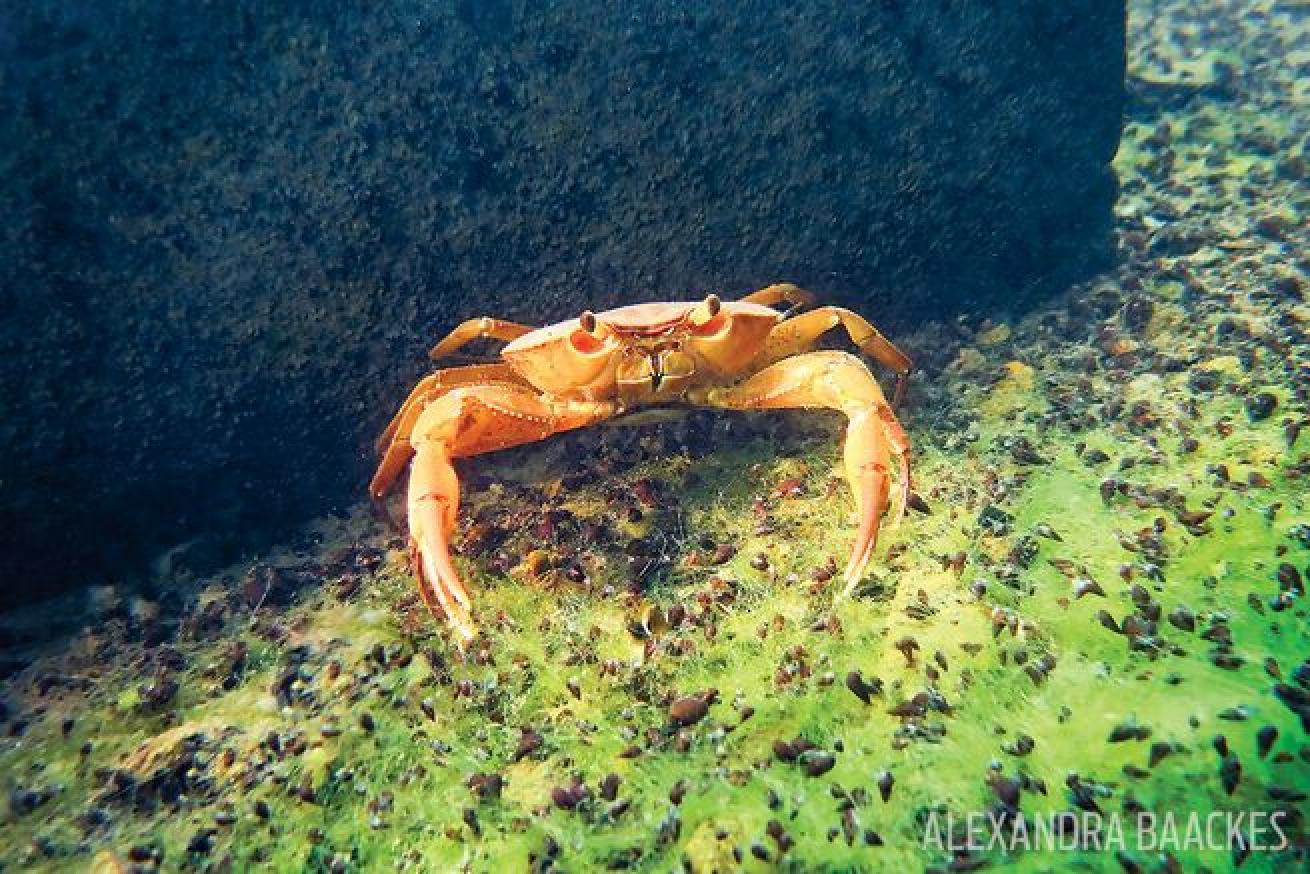
Alexandra BaackesA freshwater crab scuttles across a flooded stairwell.
The temperature rises as we descend, warm water seeping from fissures and thermal vents below. We’re on the hunt for more heat, plunging our palms into the silty muck until they nearly burn. We’ve arrived. My hand finally pressed against the fault line, I feel like I’m taking the volcano’s heartbeat. Oli presents an uncooked egg, which he quickly boils over one of the volcanic vents for our amusement.
We keep our eyes peeled for the unexpected. In 1996, a local businessman and recreational diver named Roberto Samayoa discovered a 2,000-year-old ceremonial site, with intact relics, submerged under 115 feet of water. More recent explorations indicate that the site, now named Samabaj, was once located on an island in the lake. The site is closed to divers as UNESCO sniffs around, spiking hopes among locals of the area being granted Heritage Site status.
We slowly ascend toward another victim of rising waters — a dock, a pool now filled with algae and bickering crabs, and the proudly planned bar of a once grand vacation home. We open an underwater tab and play with old beer bottles at the bar, my mind wandering to the family that once sat down to dinner on this deck, the friends that must have shared a laugh at this bar. We swim to the sauna-turned-swim-through where a large air pocket allows us to pop out our regulators and chat briefly beneath the surface.
We surface again to a 360-degree view of a volcano-ringed caldera that seems almost too perfect to be true, a reminder of a quote by the writer Aldous Huxley, who upon visiting the lake famously claimed, “It is really too much of a good thing.”
Related Reading: How to Dive Lake Phoenix, Virginia
And someday it truly might be too much. Back at my hotel, I can’t help but stare suspiciously at the ever- rising shoreline. Though local business owners report water levels are back down again, the inviting waters seem heavy with myths, mysteries and even a bit of magic. Might a diver someday explore the submerged ruin of La Iguana Perdida, swimming into the room I curled up to bed in, floating over the desk where I spent my afternoons writing, and surface over the dock where I watched the sunset?
Lake Atitlan is an ever-changing reminder that the Earth is quite literally alive beneath our feet and our fins. And at any moment it could reclaim the things humans have built up along its shores, pulling them slowly back into the bellybutton of the beast.



